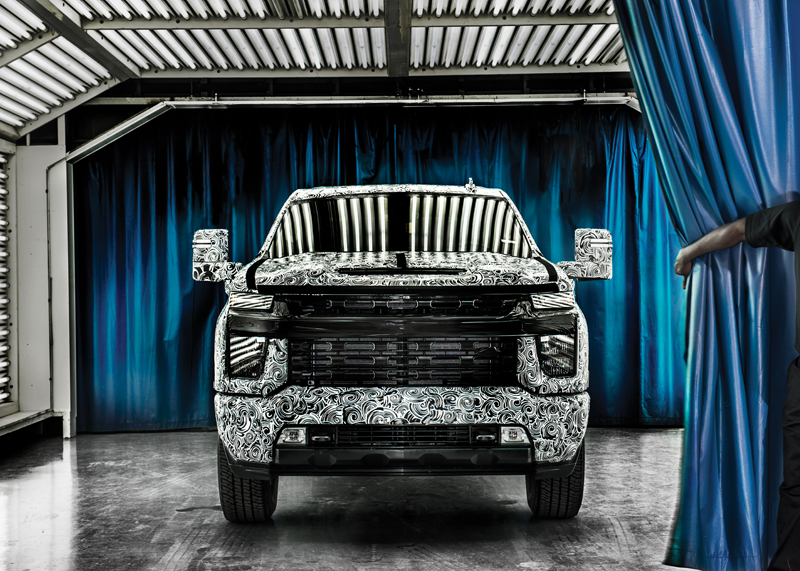
When the Big Three automakers road test concept vehicles, the camouflage they use keeps auto enthusiasts, media outlets, and competitors from getting a sneak peek at New models. Prior to this month’s North American International Auto Show at Cobo Center in Detroit, General Motors Co. pulls back the curtain on the facts and figures of concealing its latest concepts

1
With an optical illusion-inducing print, phase one of the process involves covering a vehicle’s exterior with sheets of stickers in customized patterns to create a blurry effect when photographed. Lionel Perkins, senior project design engineer for camouflage at GM North America, and his team spend up to six months in planning before starting this stage. “It’s not just applying stickers,” he says. “We put a lot of thought behind what we do.”
6
The amount of time it takes to coat a vehicle with the visually appealing, black-and-white first layer of camouflage can vary. Concealing large trucks, which GM has continued to report strong sales on month-after-month, can take up to six hours. “There are a lot of details in a vehicle that massive,” Perkins says. While a smaller vehicle, like a sedan or sports car, can take the camouflage team two to four hours to fully coat in stickers.

2
Phase two, which requires the camo team to apply pieces of black vinyl to the exterior of a vehicle, may take less time than phase one — roughly two hours. Though, that doesn’t make the step any less important. Various shapes of foam can be inserted under the flexible vinyl material, which is secured using pressure-sensitive Velcro. These pieces allow GM to manipulate the overall shape of a vehicle and its unseen silhouette.
8
During the eight years that Perkins has served in his role, he’s learned the importance of being meticulous when applying camouflage. If not done with extreme attention to detail, it’s possible that a layer of the camouflage could come loose during a test drive. “It’s critical how well we install this,” Perkins says. An exposed portion of the vehicle could possibly give hints at features still in development. “We want to be first to market.”

3
The exterior of a vehicle may be what a majority of passersby see, but the GM camo team must also disguise the interior, which is visible when a door is open. Phase three uses lightweight Velcro and high-quality adhesive to conceal the dashboard, seats, and steering wheel. “Sunlight coming through glass can make Velcro not stick very well,” Perkins says, noting some adhesive works better in higher temperatures. “We take that into consideration.” The final step, phase four, involves draping a large, lockable cover over the entire vehicle.
19
Once complete, a camouflaged vehicle may undergo testing for nearly three years in all types of weather conditions. By the time a vehicle is unveiled at NAIAS, open to the public this year on Jan. 19, the years of work put into camouflaging will hopefully garner a sense of excitement. “I sometimes forget how the vehicle looked, because I’ve spent so much time keeping it under wraps,” Perkins says. “When you take the mask off, it’s beautiful.”
Curious to see what’s under the camouflage? Visit hourdetroit.com to see the unwrapped GM truck.
|
|
|










